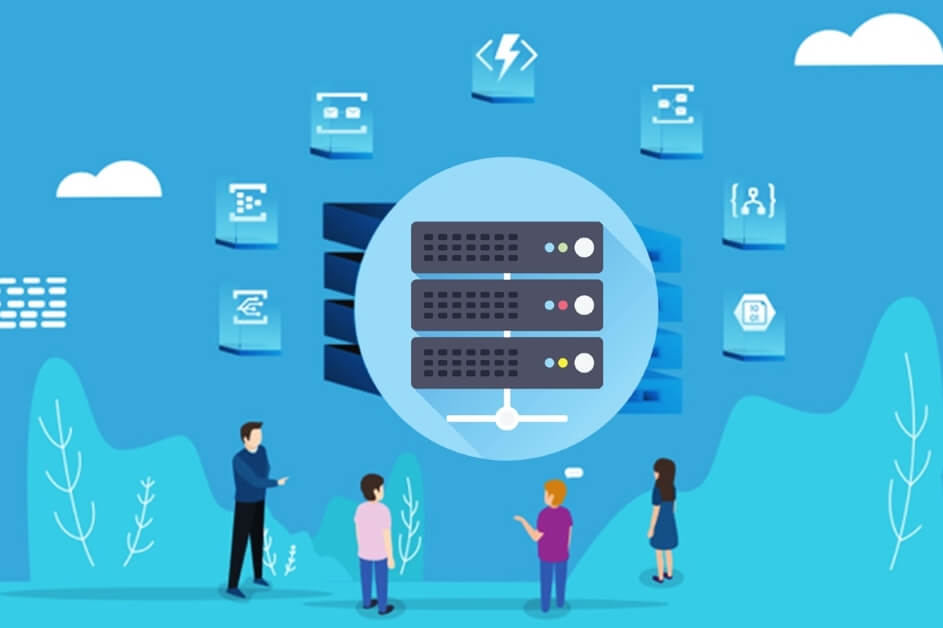
The concept of Serverless architecture has started to grow in popularity. For the past few years, it has rapidly emerged as a new technological concept. A number of experts have praised the efficiency and benefits which it offers. But others have openly criticized some of its shortcomings. Cloud vendors like AWS have gone been raving on about the architecture. People are discussing about it at various conferences and meetups, even on blogposts. It promises to provide businesses with impressive benefits and is affordable. A lot of people are being advised to trust the infrastructure but there is also some reasonable doubt.
Serverless Architecture promises to take a lot of work off our hands and allows businesses to focus their resources on other aspects. This means businesses could do more and grow easily. It would help to provide an ideal environment for business operations. Small businesses love their benefits because they are able to do a lot more with their limited resources.
In reality, Serverless is breaking ground and could soon become a threat to your server infrastructure. Notable companies around the world such as Telenor, Netflix, AOL, and Reuters make use of the Serverless. Serverless has all it takes to become a top choice but it may not all be smooth sailing. There may be some scenarios where the use of Serverless may be considered inappropriate. However, what really is Serverless architecture?
In this guide, we’ll be taking a step-by-step look at what Serverless architecture is.
What is Serverless Architecture?
Serverless Architecture is a cloud computing execution model in which the cloud provider can easily manage the allocation and provisioning of servers. A serverless application is housed in stateless compute containers. These containers are triggered based on events, are ephemeral and completely controlled by the cloud provider. The pricing of this infrastructure is dependent on the number of executions. Basically, it is what every business out there has been waiting for. As a brand, it means you have the chance to do other things.
The serverless application is completely cloud-based. Here, app development is based on cloud-hosted remote procedure calls, client-side logic, and third-party services. This infrastructure is known to be available as a service. A lot of top cloud providers around the world have invested a lot of money in Serverless Computing. This enough gives you the assurance that it will experience a good amount of expansion. A lot of development will go into it and it may become of the most used services for years to come.
Now the term “serverless” does not necessarily mean that there are no servers used. The term means that the servers used by these companies are not bought or rented. The management of the servers is left completely to a third-party. Serverless is written in conjunction with traditional server styles. For instance, a web application could be written as partly microservices and a serverless code. Also, applications can also be developed which will rely completely on the serverless infrastructure. It depends completely on what you want.
Outsourcing Serverless architecture design service to WeblineIndia can benefit businesses with best software design patterns and is also cost effective. Contact us.
These are some of the following cloud services which have supported the development of Serverless Architecture. They include;
- AWS Lambda
- Azure Functions
- Kubeless
- Iron Functions
- Google Cloud Functions
- Alibaba Function Compute
- IBM OpenWhisk
- Auth0 Webtask
- Oracle Fn Project
The features of serverless architecture include,
- Simple computing resources
- No pre-allocation of resources
- Flexible to use and easily scalable
- Users only need to pay for the resources which have been used
Evolution of Serverless Architecture
Serverless Architecture has been introduced to help businesses get access to more productivity. With its development, a business can now focus on app development. Also, businesses don’t have to pay much on development costs. The development cycle is also shortened. The promise of having an ideal business setup.
The development of serverless was known to pass through different notable milestones. These milestones include;
- Virtualization technology is introduced to virtualize large servers into individual VM resources.
- Virtualization clusters are transferred to cloud-based computing platforms.
- The VMs are now divided into Docker containers to minimize operating space.
- Applications based on Docker containers do not need to rely on any environment to run. It utilizes a completely serverless architecture as its core.
- Serverless is now developed. It is known to allow developers to focus on the creation of their apps.
Differences between Traditional Servers and Serverless Architecture
For some time now, a lot of applications have been running on servers. But using these servers; means that you have to constantly patch, update and look after all the time. Failure to watch applications which run on traditional servers are prone to different types of errors. As long as you’re going to manage the functionality of your app, the whole responsibility of this app is on you. With serverless architecture, you don’t have to worry about any servers. Cloud providers manage these servers. A lot of brands are now having a problem deciding between Serverless and traditional servers. But the truth remains that serverless is only useful in certain scenarios.
Why use Serverless Architecture?
The big deal about serverless architecture is the degree of functionality which it promises to businesses. When you make use of serverless, you hand over all forms of control to a third-party. It offers developers a good deal of flexibility, faster speed, more functionality, and reduced cost. By making use of serverless infrastructure, developers do not need to worry at all. They do not have to purchase, provide or manage backend servers. However, do not think serverless architecture is a magical solution to make your business thrive. It would be advisable that you make your research and find out the pros and cons before opting for it.
Contact us, If you have a project idea, we would love to help you with it! Send us a message with your ideas and our representative will contact you shortly.
When Serverless Architecture is not the right choice?
It is not in every scenario that serverless architecture is the right choice. There are sometimes where it would just be inappropriate to apply it to certain key aspects of running a business. It should also be noted that Serverless architecture should not be perceived as a magical solution to all the problems that face businesses.
Networking. Serverless architecture is designed such that they are only accessible via private APIs. To access this, then you need to have created an API Gateway. This doesn’t mean that you have to pay extra to access the functions of your infrastructure. Traditional servers are easily reachable via the usual IP. There’s no need for any extra processes. With the use of traditional servers, there’s no need for any special media to access it with; no gateway.
Third-party Dependencies. If your projects are set up without any external redundancies, then it has to rely on libraries built in the language in use. A number of libraries are known to possess more functionality than others and as such, they are heavier and take up a lot of space. It can be a problem when you have to package dependencies into the application itself. When dealing with a few numbers of dependencies, serverless architecture can easily be applied. However, when dealing with more dependencies serverless architecture may become difficult without the right access.
This isn’t the case with traditional servers and their setup.
Timeout. Serverless Architecture is known to have a 300-second timeout limit. This can be quite difficult to keep up with. Functions that take to long to run are bad for serverless architecture. It is even impossible to apply in certain tasks. It can be difficult to use with applications that have long and unspecified execution times. Also, if the application requires any input from an external source it makes serverless architecture a bad choice.
Serverless Architecture Examples
Serverless architecture is useful for the following scenarios or examples. These scenarios include;
Event-Triggered Computing. If you’ll be having a lot of devices trying to access a variety of files, serverless architecture can be quite useful. For instance when you have Phones and PCs uploading text, image and video files.
Elastic Resizing for Live Video broadcasting. Serverless architecture is a great choice for video broadcasting scenarios. With the use of this infrastructure, it is possible to view multiplexed and synthesized videos in real-time. In certain live videos, the host is able to interact with multiple audience members through their mics. The host can also connect multiple audience members to the screen.
IoT Data Processing. Serverless Architecture can be applied to suit an Internet of Things scenario.
Shared Delivery Dispatch System. Customers can make use of a dispatch platform to choose from a variety of sellers who provide a similar service. The dispatch platform will then notify the nearest delivery system or the nearest seller to provide the service. This process can easily be implemented with the use of serverless architecture.
Other notable serverless architecture examples include;
- Real-time data processing systems
- Data analysis from social media
- Web or frontend applications
- APIs or backend applications
If you’re looking to optimize your structure making use of serverless, there are a variety of reference applications all over the world.
Serverless Architecture with AWS Lambda
Serverless Architecture has been developed over time. It offers a system in which traditional servers are absent. AWS Lambda played a quite imports t role in the development of this infrastructure. In 2014, AWS Lambda was the main driving force behind serverless architecture. A lot of other cloud-based companies and other tech giants have expressed interest in contributing further to its growth.
The relationship between AWS Lambda and Serverless Architecture is quite an interesting one. So, let’s take a look at Serverless Architecture on aws.
- AWS Lambda is known to be quite affordable. Its system is also designed to be an event-driven model. As soon as the required event is triggered, Lamba will provide compute resources and run a function or code.
- Serverless architecture on aws ensures that the scalability and speed of applications are not affected by any unused utilized server capacity. Basically, the apps are able to clock more speeds. Examples of its users include SendBird and Click Travel.
- With Lambda, unused server capacity does not affect scalability and responsiveness. It’s a platform that will help you cope with a demand surge without crashing your system.
There’s a lot of room for growth and functionality with Serverless architecture aws. It supports a variety of languages such as Python and JavaScript. The number of real-life applications is on the increase.
Looking for AWS Lambda app development company? Contact us today. We can help you with quick and easy deployment of scalable web apps with rich user interfaces.
Benefits to Software Developers
What do software developers get to enjoy when making use of this infrastructure?
- Reduced costs. The first advantage which you can think of is the reduced cost which it offers. If you’ll be making use of traditional servers, you would need to purchase the equipment and will also be in charge of its maintenance. When you consider all the costs spent on hardware servers, it’s quite expensive. When making use of Serverless Architecture, the service is not free. You still have to pay for the ideal time of these virtual servers. However, you’re able to easily avoid most of the maintenance cost. You’re also able to save money because it will have multiple applications running on the same resources.
- Available Third-party services. A lot of responsibility is taken off your hands. It is possible to leave some aspects of running the application to cloud-based services. Basically, this is the dream of every software developer. Developers are looking to create systems that can withstand a lot of loads. There’s no redundant computing power that will slow down all the computer processes. Serverless Architecture on aws allows users to share resources evenly depending on the size of the load, thereby reducing costs.
- Increase application resiliency. The functions of the app are not dependent on each other. So, a failure in one function does not crash the entire application.
- Application response or latency. This is a critical concern of software developers. Physical geography usually affects application’s response time. With serverless, this is eliminated because of the global coverage which it offers. Apps can now function in the shortest time possible.
- There’s no administration and any admin-related costs are completely eliminated. There’s also no room for admin failures or scenarios of incompetence.
- Serverless platforms take less time to market their applications. This means that developers can now readily launch their products. This helps to offer a level of competitive advantage.
Benefits to Business Owners
Earlier, it was mentioned that serverless was the key to an ideal business. Let’s take look at some of the benefits which it offers businesses.
- It helps to reduce production-to-market distance. Originally, a business would require that you do a lot of planning and spending during the pre-production and production stages. When using this infrastructure, you don’t have to worry about this. To eliminate all of this, you need to find a serverless provider which can effectively handle your needs and is capable of ensuring that your service is uninterrupted.
- It allows more benefits and functionality of the business. Serverless Architecture means that a business doesn’t have to worry about handling servers for the business. Server administration and control can be a lot. While this is off the plate, businesses can focus on other important aspects. This way, there’s an increased chance for better growth. These businesses are even able to create better, cheaper and products that are readily available.
- Reduced fixed costs. Basically, the business does not have to pay all those fees to keep your server up and running. By reducing your cost, you are able to ensure that you can maintain a high amount of flexibility in pricing.
Serverless Architecture is a lot. It promises a lot and certain businesses or brands have started to enjoy some of these benefits. Surely, a lot of others will join soon. But before hurrying to discard your servers, understand that serverless doesn’t work for all applications. Asides that, you can expect it to become a major option for a lot of us.
Key Take-Aways from this post,
Serverless Architecture is a cloud computing based execution model in which the cloud provider manages the allocation and provisioning of servers. A serverless application is housed in stateless compute containers.
- AWS Lambda
- Azure Functions
- Kubeless
- Google Cloud Functions
- IBM OpenWhisk
- and many more
- Simple computing resources.
- No pre-allocation of resources.
- Flexible to use and easily scalable.
- Users only need to pay for the resources which have been used.
- Networking based applications.
- Third-party dependent libraries are used.
- Functions requiring more time to run.
- Event-Triggered Computing.
- Elastic Resizing for Live Video broadcasting.
- IoT Data Processing.
- Shared Delivery Dispatch System.
- Real-time Data Processing Systems.
- Data analysis from social media.
- Web or Frontend Applications.
- APIs or Backend Applications.
- Reduced costs.
- Available Third-party services.
- Increase application resiliency.
- Application response or latency.
- Serverless platforms take less time to market their applications.
- It helps to reduce production-to-market distance.
- It helps to reduce hassles in maintaining and handling servers.
- Reduced fixed recurring costs.
Testimonials: Hear It Straight From Our Global Clients
Our development processes delivers dynamic solutions to tackle business challenges, optimize costs, and drive digital transformation. Expert-backed solutions enhance client retention and online presence, with proven success stories highlighting real-world problem-solving through innovative applications. Our esteemed Worldwide clients just experienced it.
Awards and Recognitions
While delighted clients are our greatest motivation, industry recognition holds significant value. WeblineIndia has consistently led in technology, with awards and accolades reaffirming our excellence.

OA500 Global Outsourcing Firms 2025, by Outsource Accelerator

Top Software Development Company, by GoodFirms

BEST FINTECH PRODUCT SOLUTION COMPANY - 2022, by GESIA

Awarded as - TOP APP DEVELOPMENT COMPANY IN INDIA of the YEAR 2020, by SoftwareSuggest

